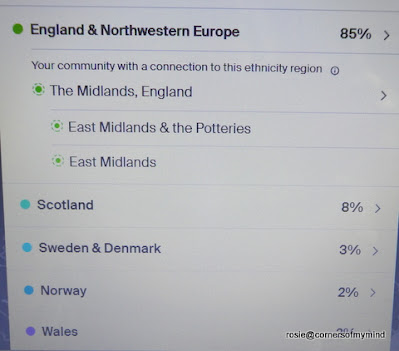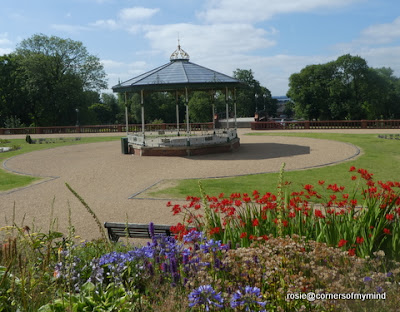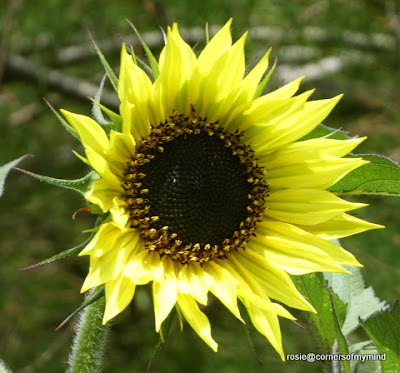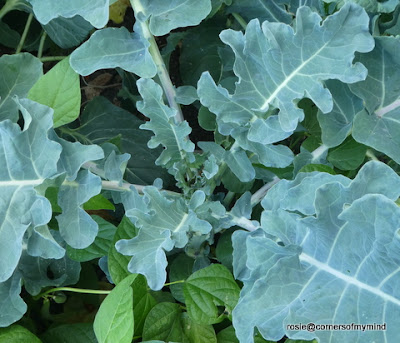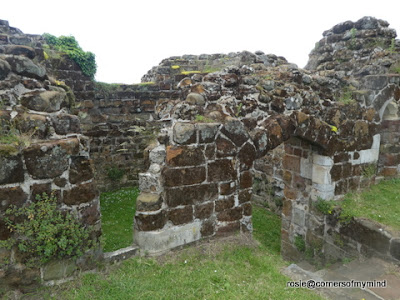I've found my Mum and Dad on the 1921 Census available on Find My Past. I've just realised that makes me sound very old and perhaps I am at 71 (a month away from 72) although I don't feel it, well perhaps I have just a little recently. I was a late baby for them. My father was born in 1909 and my mother in 1916. My father would have been a young child of 5 or 6 when WWI broke out and my mother was born in the middle year of the conflict. Two world wars in their lifetime.
On Ancestry UK they have refined and advanced DNA results so that we are now able to see which parent may have given us our genetic background.
As you can see from the above I have 85% Western Europe - English East Midlands and Potteries, 8% Scotland, 3% Sweden and Denmark, 2% Norway and 2% Wales in my genetic make up.
From this they can determine which parent gave you which regions in their genes if you know of ancestors from these regions. I know I have a 3 x great grandfather from Scotland on my mother's side so I think parent one in the diagram above is my mother. I find it all quite fascinating.
Talking of the Potteries, where we have lived for around twenty five years, I read in a recent copy of 'Amateur Gardening' magazine that this year Stoke-on-Trent is one of the top five 'wildlife rich' cities in the UK. How wonderful. The others are Bristol, Leicester, Reading and Edinburgh. The data is from the National Biodiversity Network Atlas.
Also in Stoke-on-Trent, Hanley Park in the city centre has been given a Green Flag Award since its refurbishment over the last few years. We visited the park a couple of weeks ago to see the changes and I took a few photos.
More details - here - about the award.
I've been reading quite a lot recently. I've listed them on the blog pages above. My last read was another Bill Slider novel by Cynthia Harrod-Eagles. I enjoy these as they are always amusing as well as interesting. I've also found a couple of interesting new series of books. A series called The Kipper Cottage Mysteries set in Whitby by Jan Durham which are classed a 'cosy' mysteries on the library website. I've also read the first three of a series set in coastal Lincolnshire by Jack Cartwright. A little further south in Lincolnshire is where Joy Ellis sets her novels and I've just read the latest of her Matt Ballard series.
I have five books reserved at the library 'Serpent's Point' by Kate Ellis, 'Godmersham Park' by Gill Hornby, 'Thrown' by Sara Cox, 'Murder before Evensong' by The Rev Richard Coles and 'The Ink Black Heart' by Robert Galbraith.
I can see by the number of people waiting for each book which one will be available first. I'll let you know.
Hope you all have a good weekend.

